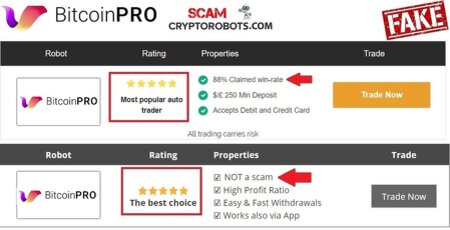Contents
A fun way to remember where the order price should be set for limit or stop orders are the acronyms BLiSS and SLoBS. BLiSS stands for buy limit or sell stop, which are both done at or below the current market price. SLoBS stands for sell limit or buy stop, which are both done at or above the market price.
Deciding what types of trades to place can be challenging for beginning investors. Using limit orders is unnecessary for investors focused on buying and holding quality companies for long periods of time, which we believe is the most reliable way to build wealth. A limit order is an instruction for a broker to buy a stock or other security at or below a set price, or to sell a stock at or above the indicated price. In essence, a limit order tells your broker that you’d like to buy or sell a security, but only if the price of the security hits your desired target. A broker with these instructions only executes a trade at the limit price or better and only if the security reaches that price. A limit order is an order to buy a security at a specified maximum price or sell a security at a specified minimum price.
Risk of no execution – Limit orders allow you to seek a specific price or better, but they do not guarantee that an execution will occur because the price may never reach your limit price. In addition, market orders are always executed prior to limit orders. Investors use a day limit order to make sure they get the best possible stock price on a given trading day. A day limit order, as the name implies, expires at the end of the trading day. An investor usually set a day limit order at or around the bid price — the highest price they are willing to pay for a stock — if they’re submitting a buy order.
It can be due to factors like earnings announcements, a change in an analyst’s outlook or a news release. Gaps frequently occur at the open of major exchanges, when news or events outside of trading hours have created an imbalance in supply and demand. The above chart illustrates the use of market orders versus limit orders. It may be challenging to find the actual price and make limit orders suitable for low-volume stocks not listed on major exchanges.

Even with large-cap markets, there are times when extreme swings can happen, such as market crashes or other unusual events. If you place a market order in one of these situations, the trading price could end up far different than what you hoped. In a similar way that a “gap down” can work against you with a stop order to sell, a “gap up” can work in your favor in the case of a limit order to sell, as illustrated in the chart below. In this example, a limit order to sell is placed at a limit price of $50. A stop order is an order to buy or sell a stock at the market price once the stock has traded at or through a specified price (the “stop price”). If the stock reaches the stop price, the order becomes a market order and is filled at the next available market price.
Limit Orders vs. Market Orders
Note, even if the stock reaches the specified limit price, your order may not be filled, because there may be orders ahead of yours that eliminate the availability of shares at the limit price. A trader who wants to buy the stock when it dropped to $133 would place a buy limit order with a limit price of $133 . If the stock falls to $133 or lower, the limit order would be triggered and the order would be executed at $133 or below. If the stock fails to fall to $133 or below, no execution would occur. It is subject to the availability of security at a set price. But, on the other hand, it does not guarantee a buy or sell action because it will always be executed only when the desired price is attained.
Or, sign up with a robo-advisor to automate your investments. If the stock doesn’t reach the limit price you specify by the end of the designated timeframe, the limit order will not be executed. Once the stock reaches the stop price, the order becomes a limit order.
The order would not activate until Widget Co. declined to $8.50, but your trade wouldn’t happen until the stock dropped to $8. Both place an order to trade stock if it reaches a certain price. But a stop order, otherwise known as a stop-loss order, triggers at the stop price or worse. Then, it is a sell limit order, where he will sell the shares only if it reaches $35 and above.
- But with limit orders, you know exactly how much you’ll pay for the number of shares specified in your order.
- They could use a market order and buy the stock at $125.26 , or they could use a buy limit at any price of $125.25 or below.
- A stop loss order is an order to sell or buy when the security’s price is moving against the investor and reaches a certain level.
- This allows for a small amount of price fluctuation while still protecting the trader from an unexpected price execution.
You can avoid locking in losses greatly in excess of 10% by instead establishing a stop-limit order, which only executes when the stock’s price is between, say, $90 and $89.50. Using a stop-limit order enables you to continue to hold a stock you believe will regain its worth. While a limit order can be useful in controlling how much you pay for a stock, it doesn’t come without its drawbacks.
? Understanding a limit order
A good ’til canceled order won’t expire unless the investor cancels it, or they can set a certain expiration date for the order. John Schmidt is the Assistant Assigning Editor for investing and retirement. Before joining Forbes Advisor, John was a senior writer at Acorns and editor at market research group Corporate Insight. His work has appeared in CNBC + Acorns’s Grow, MarketWatch and The Financial Diet. A price gap occurs when a stock’s price makes a sharp move up or down with no trading occurring in between.

A limit order may be appropriate when you think you can buy at a price lower than–or sell at a price higher than–the current quote. It helps to think of each order type as a distinct tool, suited to its own purpose. Whether you’re buying or selling, it’s important to identify your primary goal—whether it’s having your order filled quickly at the prevailing market price or controlling the price of your trade.
A market order is generally appropriate when you think a stock is priced right, when you are sure you want a fill on your order, or when you want an immediate execution. Market orders, limit orders, and stop orders are common order types used to buy or sell stocks and ETFs. It can be advantageous when the trader cannot keep regular track of his portfolio but has a specific price in mind. They would like to execute, buy or sell any particular security. Investing is about maximizing gains and minimizing risk — and using different types of orders is one way to help you do that.
But it’s important to remember that the most recently traded buy or sell price may not be the same as your execution price, particularly if the individual stock or the broader market is volatile. “The volume of market orders tends to outpace limit orders,” says Bryan Kuderna, CFP® and founder of Kuderna Financial Team. But it’s not unusual to see an uptick in limit orders during periods of volatility.
Traders who may not want to miss an opportunity could use limit orders to their advantage. A limit order may provide control over your portfolio even if you aren’t currently monitoring the stock market. You might be at lunch during a period of high volatility in the market, but your brokerage will trigger the trades no matter what. A market order is an order to buy or sell a stock at the market’s current best available price. A market order typically ensures an execution, but it does not guarantee a specified price. Market orders are optimal when the primary goal is to execute the trade immediately.
Before making decisions with legal, tax, or accounting effects, you should consult appropriate professionals. Information is from sources deemed reliable on the date of publication, but Robinhood does not guarantee its accuracy. In general, understanding order types https://coinbreakingnews.info/ can help you prioritize your needs, manage risk, speed execution, and provide price improvement. For all of your securities transactions, check the trade confirmation you receive from your broker to make sure the price, fees, and order information is accurate.
“Above the market” refers to an order to buy or sell at a price higher than the current market price. He has been a professional day and swing trader since 2005. Cory is an expert on stock, forex and futures price action trading strategies.
What Is a Limit Order in Trading, and How Does It Work?
Setting a stop order for $8 per share would sell shares of Widget Co. as soon as they dip to $8 or lower. Let’s revisit our previous example, but look at the potential impacts of using a stop order to buy and a stop order to sell–with the stop prices the same as the limit prices previously used. A buy stop order is entered at a stop price above the current market price (in essence “stopping” the stock from getting away from you as it rises). Generally, market orders should be placed only during market hours.

Limit orders can help put boundaries in place for orders so you only execute a buy order or sell order at set prices. Stop orders are a type of order to buy or sell when a stock reaches a certain price, which is referred to as the stop price. When that price is met, the order becomes a market order and trades right away.
How to Place a Limit Order
When you’re trading stocks, it’s important to understand that a limit order allows you to specify the maximum price you’re willing to pay or the minimum price at which you’re willing to sell. This can help protect you from paying too much for a stock or selling for less than you wanted. Limit orders and market orders are the two most common order types. A market order instructs a broker to buy or sell shares of stock at the best available price.
When you should choose a market vs limit order depends on your priorities. If you absolutely want the trade to go through and the final price is less important, you should use a market order. For less volatile securities with fewer dramatic price swings, market orders are also less likely to run into trouble. For most securities, especially those with lots of shares on the market, dramatic price swings do not happen in a matter of seconds. When you make a market order, chances are the price you first see will be quite close to what you trade at. Let’s say Widget Co. is currently trading at $15 per share and you have your limit order ready to buy at $10.
A limit order is an order requesting the purchase or sale of securities should a specific price be met. A stop-limit order builds one additional layer that requires a specific price be met that is different than the sale price. For example, a limit order to sell your security for $15 will likely execute when the market price reaches $15. Alternatively, a stop-limit order can be placed to sell your security for $15 only if the share price has dropped from $20 to $16.
An order is an investor’s instructions to a broker or brokerage firm to purchase or sell a security. Market and limit orders are two types of orders that investors can use to better control how they invest their money and at what price. A market order is an instruction to buy or sell a security immediately. It guarantees that the order will be executed, but does not guarantee the price since the prices of securities are always changing — even as you place your order.
That’s because stock values fluctuate constantly, rising or falling from one second or one minute to the next. Using a limit order helps ensure you can buy or sell shares of stock at the price you want. This information is educational, and is not an offer to sell or a solicitation of an offer to buy any security.
A limit order will execute only at the limit price or better. A limit order allows an investor to buy or sell a security at a specific price — an order will only execute at the given price or better. There’s no guarantee that the stock you’re aiming to sell or buy will reach the limit price you choose, but a limit order prevents you from buying at a price that’s higher than you wish. Getting the right price in the stock market can be a challenge.
